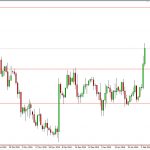We’re at the height of the Q3 earnings season, and it will not be an exaggeration to say that overall top line growth has been stressed. In fact, as of Friday, Oct 23, Q3 results from 172 S&P 500 members have revealed that total earnings are up only +2.0% on -2.1% lower revenues. (Read: Q3 Earnings Weak, Despite Tech Strength).
Though the broader Finance sector, of which the real estate investment trusts (REITs) are part, has reported a rise in earnings (thanks to cost cuts), the weakness in top line is palpable with modest growth in core loans and soft capital market activities amid low interest rates.
In fact, the recent bout of soft economic data, ranging from weaker job additions, decline in both ISM survey counts, dip in Consumer Price Index (CPI) and weak manufacturing activity, had already raised doubts about the economy meeting the Fed’s inflation rate target for a rate hike.
Now, the rate of growth in the U.S. economy seems well clipped with weak earnings flowing in from the corporate sector due to softness in commodity prices, a strong U.S. dollar and the uneasiness in the global economy that is hurting top-line performances.
REITs Back In Limelight
With all these pushing back the chances for a rate hike to at least early next year; the REITs have once again stolen the spotlight. They end up as big gainers in such an environment where their cost of debt, on which they are heavily dependent, is low. And above all, their dividend yield grabs investors’ attention more than yields on fixed income and money market accounts in times like this.
Therefore, with the majority of REITs still to report, the time is now to explore the industry fundamentals and the past-quarter performance to figure their chances of beating. Generally, an earnings beat serves as a catalyst, raising investors’ confidence in a stock, leading to rapid price appreciation.
REIT Fundamentals Remains Stable
A look at the fundamentals of REITs confirms stability and strength. According to a recent study of the commercial real estate services’ firm CBRE Group Inc. (CBG), demand for U.S. commercial real estate was healthy in Q3, with rents moving up and vacancy level lingering at the lowest level.
Per the CBRE Group study, the vacancy rate in the office sector during Q3 declined 10 basis points (bps) sequentially to 13.4%. Solid demand for office space seems to have well outpaced new supply with the rate being flat or declining for 22 consecutive quarters.













Leave A Comment